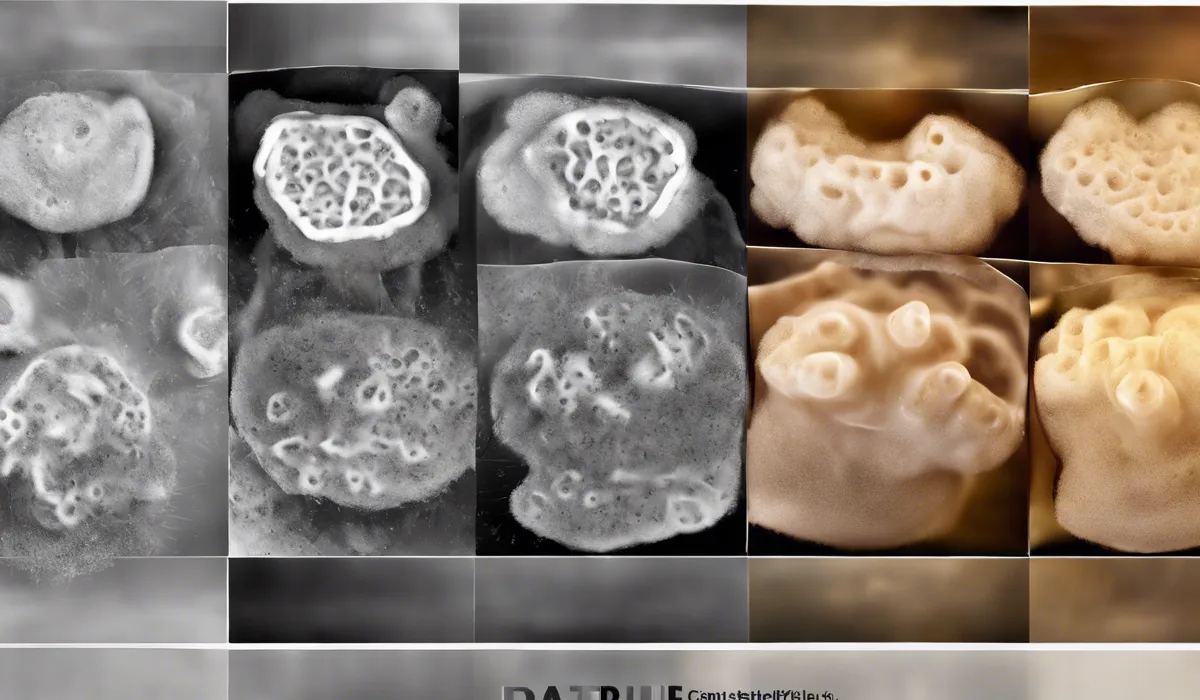Yes, mold can make you nauseous. Exposure to mold spores may trigger nausea as part of an allergic reaction or due to mycotoxin production by certain molds. This response can vary depending on individual sensitivity and the mold species involved.
Understanding Mold and Its Health Implications

What is Mold?
Mold is a type of fungus that can grow both indoors and outdoors. It thrives in warm, damp, and humid conditions, and reproduces by releasing spores into the air.
These microscopic spores can be harmful when inhaled or ingested. There are thousands of different mold species, ranging from harmless to toxic.
Types of Mold Commonly Found
Among the many types of mold, a few are more commonly encountered in homes. These include Aspergillus, Cladosporium, Penicillium, and Stachybotrys chartarum, also known as black mold.
Each type can have different effects on health, and some produce harmful substances called mycotoxins.
Mold’s Favorite Hangouts
Mold can grow in many places around your home or workplace. It loves to settle in damp areas, such as bathrooms, kitchens, basements, and around leaks in roofs, windows, or pipes.
It can also grow in places where there has been flooding or where humidity is consistently high.
The Ideal Environment for Mold
Mold spores are always looking for the perfect place to grow. They need moisture, warmth, and a food source such as wood, paper, or fabric.
When these conditions are present, mold can start to grow within 24 to 48 hours.
Health Risks of Mold Exposure
Being around mold can cause a variety of health issues, especially for people with allergies, asthma, or weakened immune systems.
Some of the risks include respiratory problems, coughing, sneezing, and irritation of the eyes, skin, nose, and throat. Long-term exposure can lead to more serious health problems.
The Connection Between Mold and Nausea

How Mold Can Make You Feel Sick
When you breathe in mold spores, your body may react by causing nausea. This is because your immune system is trying to fight off what it sees as an invasion.
For some people, even a small amount of mold can make them feel sick.
The Role of Mycotoxins
Certain molds produce toxic chemicals known as mycotoxins. These can be very harmful if you’re exposed to them over a long time.
Mycotoxins can cause nausea, as well as other serious health issues like damage to the liver, nervous system, or kidneys.
Inhaling or Ingesting Mold Spores
When mold spores get into the air, they can be inhaled into your lungs or land on food that you might eat.
This can lead to an immune response from your body. Symptoms can range from mild, like nausea, to more severe reactions, depending on the person and the type of mold.
Other Symptoms of Mold Exposure
Besides nausea, exposure to mold can cause other symptoms. These include headaches, fatigue, dizziness, and difficulty in breathing. If you notice any of these symptoms along with nausea, it might be due to mold.
Dealing with Mold-Induced Nausea and Prevention

Recognizing the Signs
If you start feeling sick and suspect it might be because of mold, look around for visible signs of mold growth or musty smells.
Also, consider if you’ve recently been in a damp or water-damaged environment.
When to Call the Professionals?
If you’ve found mold in your home and feel sick, it’s important to get professional help. Mold remediation experts can safely remove the mold and make sure your home is safe again.
Prevention Tips for Your Home
To prevent mold, keep your home dry and well-ventilated. Fix any leaks quickly, use dehumidifiers in damp areas, and ensure good air circulation. Regular cleaning can also help prevent mold growth.
The Importance of Timely Action
Dealing with mold quickly is important for your health. If left unchecked, mold can spread and become more difficult to remove.
Taking prompt action can prevent nausea and other health issues associated with mold exposure.
FAQs About Mold and Nausea
Can exposure to mold cause nausea?
Yes, exposure to mold spores can trigger nausea as a reaction to allergens or mycotoxins produced by the mold.
Is nausea a common symptom of mold exposure?
Nausea can be a common symptom, especially if you have a mold allergy or heightened sensitivity to mold.
Does the type of mold affect the likelihood of feeling nauseous?
Yes, the likelihood of feeling nauseous can vary depending on the mold species and its ability to produce mycotoxins.
Are some people more susceptible to nausea from mold than others?
Individual sensitivity to mold can vary, making some people more susceptible to experiencing nausea upon exposure.
What should I do if I feel nauseous and suspect mold exposure?
If you suspect mold exposure is causing your nausea, you should consult with a healthcare professional for proper diagnosis and treatment.
Final Thoughts
Exposure to mold spores can indeed lead to nausea, either as a symptom of an allergic reaction or due to toxins produced by certain mold types.
The severity of this reaction is subject to individual sensitivities and the particular mold species. It’s important to address mold issues promptly to prevent health problems.
